This article was medically reviewed by Troy A. Miles, MD. Dr. Miles is an Orthopedic Surgeon specializing in Adult Joint Reconstruction in California. He received his MD from the Albert Einstein College of Medicine in 2010, followed by a residency at the Oregon Health & Science University and fellowship at the University of California, Davis. He is a Diplomat of the American Board of Orthopaedic Surgery and is a member of the American Association of Hip and Knee Surgeons, American Orthopaedic Association, American Association of Orthopaedic Surgery, and the North Pacific Orthopaedic Society.
There are 10 references cited in this article, which can be found at the bottom of the page.
wikiHow marks an article as reader-approved once it receives enough positive feedback. In this case, 88% of readers who voted found the article helpful, earning it our reader-approved status.
This article has been viewed 364,127 times.
Standing on the job not only accelerates tiredness and fatigue, but it also increases the risk of various foot and leg problems because it puts strain on bones, joints, tendons, muscles and ligaments. Standing for long periods of time also causes reduced blood supply to the lower extremities, which promotes soreness. Prolonged standing may also create an accumulation of blood in the foot or around the ankles. Flat feet, plantar fasciitis, bunions, edema (swelling), varicose veins and venous insufficiency are all problems associated with prolonged standing. Fortunately, there are many ways to reduce or avoid the risks of foot and leg problems if you must stand a lot at work.
Steps
Taking More Seated Breaks
-
1Sit down more often while working. Although many jobs in modern times are sedentary and involve sitting, there are still some jobs that involve lots of standing, such as bank teller, cashier, factory worker, chef, hairdresser and various retail and construction jobs, to name a few. However, there are often opportunities to sit and rest your feet while still working and being productive, so look for those opportunities and be sure to tell your boss what you're up to. For example, sitting while answering the phone or filling out paperwork might be appropriate at your workplace, especially if there are no customers around.
- Aged people are more susceptible to foot/leg injuries from excessive standing because their tissues (ligaments, tendons, cartilage, fascia) lose elasticity and shock absorbency.
-
2Sit down during lunch. When you take your lunch break, make sure to grab a seat and put your feet up while eating and hydrating. You may be in a hurry, but take advantage of the opportunity to take the weight off your feet. If your workplace is short of chairs or doesn't have a lunch room, then either bring your own folding chair or stool, or find a different location to eat where you can safely sit down.
- Food courts at malls, outdoor picnic tables, water fountains, or even some clean grass under a tree are all good places to take a load off and enjoy your lunch.
Advertisement -
3Sit down during breaks. Make sure to take all of your allotted breaks and try to sit the entire time, preferably with your legs up, which promotes better circulation because of the reduced effects of gravity. Taking off your shoes while resting will also allow your feet to cool down by evaporation.
- While on your break, consider rolling your bare feet over a golf ball. It will feel great, relieve some tension in the soles of your feet and maybe even help prevent plantar fasciitis (pain and inflammation of the connective tissue covering the bottom of your feet).[1]
Changing Your Substrate
-
1Stand in a different spot. Many years ago, most workplaces were made with wood floors, which have some cushioning even though they may seem pretty hard to walk on. However, in modern times, most businesses tend to have floors made from concrete, ceramic tile or marble, which have essentially no cushioning, shock absorbency or insulative properties. Consequently, stand in an area that's covered in more springy material such as wood. If that's not possible, then change positions just for the exercise, which will promote blood circulation and may ease the tension in your feet and leg muscles.
- Concrete and ceramic tile will easily transfer cold to your feet which is not good for blood circulation, so stand in warmer areas without cool drafts.
- If you work outside, find some grass to stand on while plying your trade or waiting for the next task.
-
2Stand on an anti-fatigue mat. Anti-fatigue mats are designed to decrease the stress on your feet and legs by providing a cushioned surface to stand on over prolonged periods of time. These mats are typically made of thick rubber, but some are also made of foam, leather, vinyl or even wood. In many cases, your employer will readily supply you with an anti-fatigue mat if you ask because they are proven to reduce the incidence of feet and lower leg problems.[2]
- Thick anti-fatigue mats can be a minor hazard at the workplace if people trip over them, so always be aware of where your mat and those of your co-workers are located.
-
3Stand carpeting. Take a look around your workplace and see if there's any carpet you can stand on and still be able to do your job properly. Carpet (even the thin, cheap stuff) provides much more cushion than concrete and will help your feet and legs survive the long shifts at work. If there is no installed carpet at your workplace, ask your boss if you can bring a piece from home.
- Some businesses that sell carpet will give you a decent sized sample (big enough to stand on) for free.
- Make sure the underneath side of the carpet doesn't slide too readily on the floor, or else you're at high risk to slip and fall.
Wearing Appropriate Shoes and Socks
-
1Wear shoes that fit properly. A significant percentage of people wear shoes that don't fit, perhaps because their feet suddenly increased in size, or because the shoes were on sale super cheap, or because they were passed down from a relative or friend. Either way, always wear shoes to work that properly fit your feet while wearing socks. If you absolutely have to choose a pair that aren't your size, then pick a pair that is too big rather than shoes that are too small because cramped shoes often lead to blisters and foot cramps.
- Get fitted for your shoes by a shoe salesperson later in the day because that's when your feet are at their largest, usually due to swelling and slight compression of your arches.[3]
- Sacrificing style and fashion for practicality is the best strategy when shopping for work shoes.
- Always opt for shoes that support your foot arch and have an optimal inner lining to absorb shock and stress.
-
2Don't wear high heels. Women are often expected or pressured to wear high heels for many jobs, but heels more than 2 inches (5.1 cm) high can force the body to tilt forward, which creates a variety of imbalances from the feet to the low back. This situation can cause foot strain, Achilles tendonitis, tight calf muscles, knee pain and low back problems, as well as instability while walking.[4]
- Wearing completely level shoes is not the answer either, because too much pressure is put on the heel, so wear shoes that are elevated in the heel by about 1/4 or 1/2 inch.
- Most athletic or walking shoes with wide toe caps are good choices if you must stand for hours at a time at your job.
-
3Don't wear narrow shoes. High heels are often too narrow at the toe, which compresses the toes together unnaturally and increases the risk of painful bunions and unsightly calluses. Cowboy boots and some swing back sandals are also too pointy in the toe, especially if you plan on doing lots of standing. Instead, choose shoes that grip your heel tightly, provide enough room to wiggle your toes, and has enough interior support to prevent pronation (the rolling inward or collapsing of your ankle).
- Pronation is much more common in obese people and often coincides with flat feet.[5]
-
4Wear compression stockings. Compression stockings provide support to muscles and blood vessels of the lower leg, which reduces edema / swelling and promotes better circulation.They are found online, at medical supply stores and sometimes at pharmacies or physiotherapist offices. Alternatively, wear supportive pantyhose or well-padded socks.
- Compression stockings are particularly important for people who have venous insufficiency (leaky vein valves) or inflamed varicose veins.[6]
- Thick, well padded socks are helpful if you experience heel pain while standing.
- Look into other options for repairing damaged veins.
Trying Helpful Therapies
-
1Take a foot bath. Soaking your feet and lower legs in a warm Epsom salt bath can help reduce pain and swelling.[7] The magnesium in the salt is thought to help the muscles relax. If inflammation and swelling is a problem for you then follow the warm salt bath with an ice bath until your feet feel numb (about 15 minutes or so).
- Always dry your feet thoroughly before you get up and walk away from your foot bath in order to prevent slipping and falling.
- Epsom salt baths are thought to be helpful for alleviating restless leg syndrome at night, which negatively impacts sleep cycles.
-
2Get a massage. Get a massage therapist or sympathetic friend to give you a foot and calf massage. Massage reduces muscle tension and promotes better blood flow.[8] Start rubbing from the toes and work towards the calf so you help the venous blood return to the heart. Using a wooden roller under your feet will give you a decent massage by yourself without straining your hands. Consider applying peppermint lotion to your feet also, as it will tingle and invigorate them. After the massage, perform a few foot and calf stretches on both legs.
- Stretch the calf muscles by leaning against a wall with one knee bent and the other leg straight out behind you with both feet flat on the floor — hold for 30 seconds and repeat a few times.
- Stretch the bottom of your foot by wrapping a towel around the end of your toes and then trying to extend your leg — hold for 30 seconds and repeat of few times.
-
3Wear shoe orthotics. Orthotics are custom-made insoles for your shoes designed to provide arch support, shock absorption and better foot biomechanics, which can translate into less foot/leg/back pain and reduced risk of various foot and leg conditions.[9] Orthotics are particularly helpful for treating and preventing plantar fasciitis, a very painful condition of the bottom of the foot, and flat feet. Custom orthotics can be expensive without medical coverage, but off-the-shelf insoles may provide benefit also.
- It's estimated that about 2 million people require treatment for plantar fasciitis in the United States every year.
- You may have to buy shoes a little bigger than you normally would in order to accommodate the orthotics.
-
4Lose some weight. In general, people who are overweight or obese suffer more foot problems because of the increased amount of pressure on their feet.[10] Flat feet, fallen arches, severe pronation, and "knock knees" (medically known as genu valgum) are more common among the obese. As such, do your feet a favor by losing some weight. Lose weight by increasing cardiovascular exercise (such as walking) and decreasing your caloric consumption.
- Most people who are relatively sedentary only require about 2,000 calories per day to maintain their body processes and have enough energy for mild levels of exercise.
- Reducing your calorie intake by 500 calories daily will result in about 4 pounds of fat tissue loss per month.
References
- ↑ http://www.runnersworld.com/tag/plantar-fasciitis
- ↑ http://ehstoday.com/health/new-study-confirms-benefits-anti-fatigue-mats-0
- ↑ https://www.betterhealth.vic.gov.au/health/healthyliving/Choosing-the-right-shoe
- ↑ http://www.osteopathic.org/osteopathic-health/about-your-health/health-conditions-library/womens-health/Pages/high-heels.aspx
- ↑ http://www.ncbi.nlm.nih.gov/pubmed/17506905
- ↑ http://my.clevelandclinic.org/services/heart/disorders/hic_Venous_Insufficiency
- ↑ https://www.osfhealthcare.org/blog/how-to-prevent-aching-feet/
- ↑ https://www.health.harvard.edu/mind-and-mood/foot-massage-the-pause-that-refreshes-and-it-good-for-you
- ↑ http://www.podiatrytoday.com/current-insights-benefits-custom-orthoses-and-afos
About This Article
To avoid feet and leg problems if you’re standing for work, make sure to wear shoes that fit properly, since ill-fitting shoes can lead to blisters and foot cramps. Additionally, try to wear comfortable shoes, like athletic or walking shoes with extra room in the toe area. Alternatively, consider standing on a piece of carpet or an anti-fatigue mat to decrease the pressure on your legs and feet. You should also sit whenever you can, like during your breaks or lunches, and keep your legs and feet elevated if possible to improve circulation in those areas. For more advice from our Medical co-author, including how to reduce muscle tension and increase blood flow in your feet and legs, keep reading
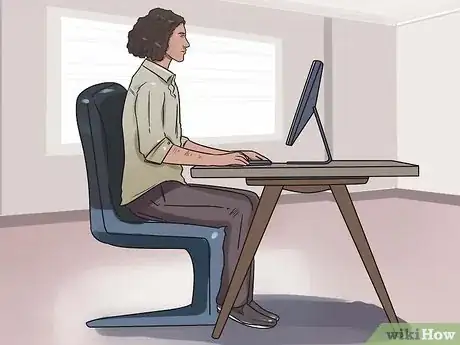

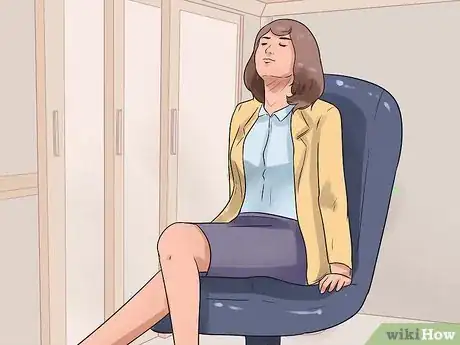
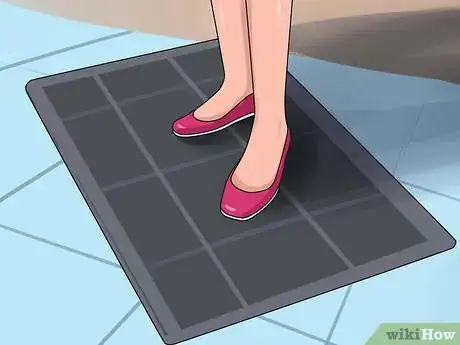
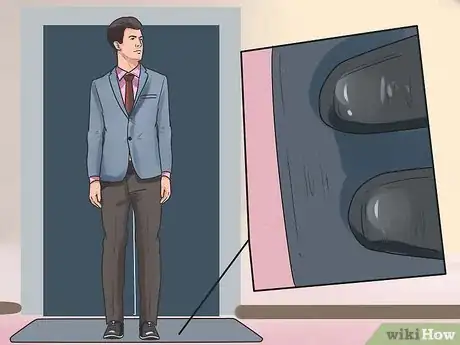
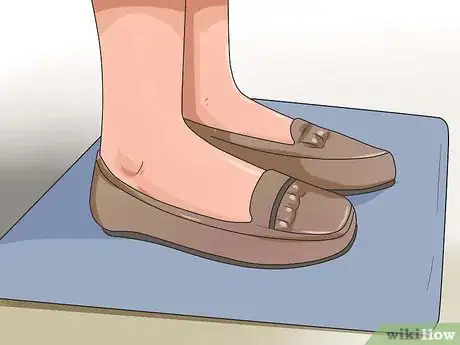
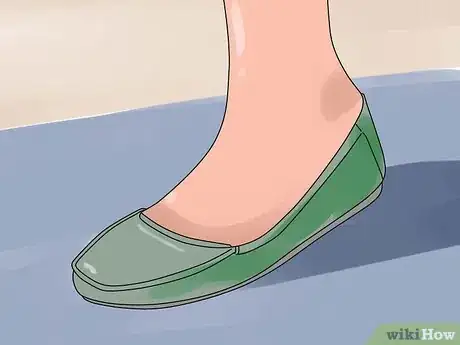
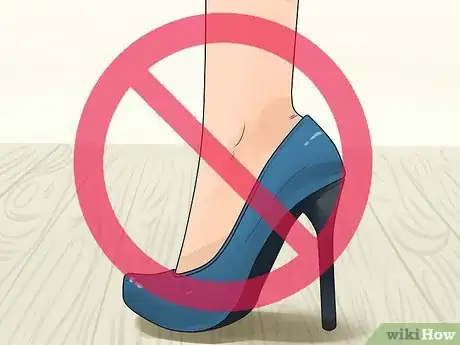
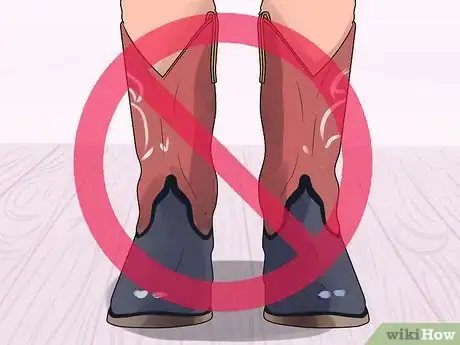
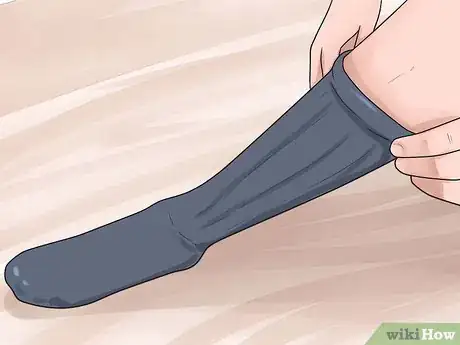
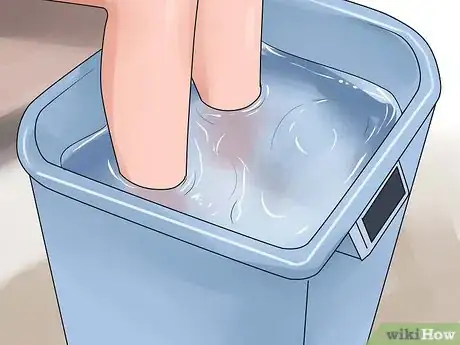
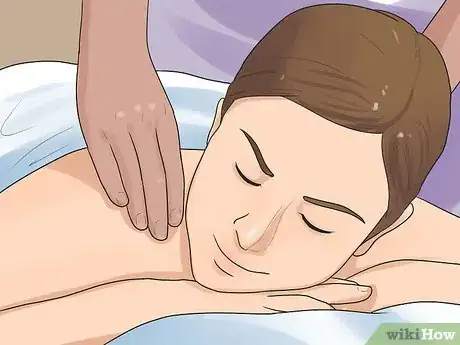
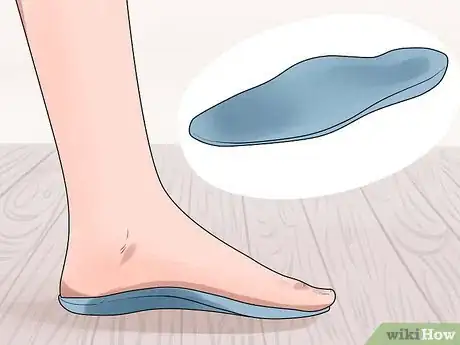
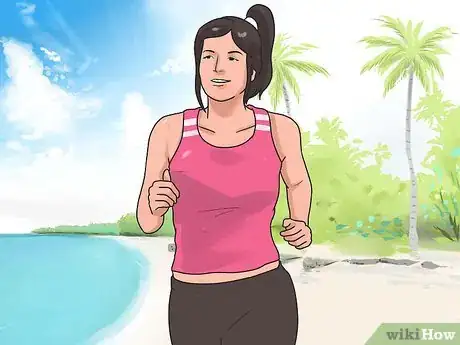
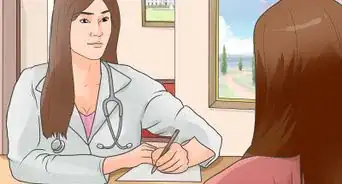
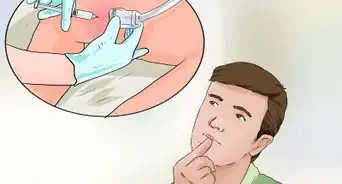
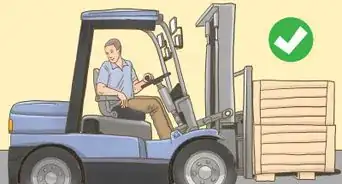
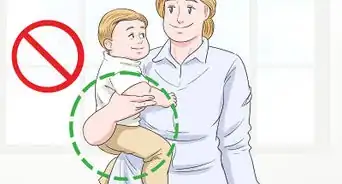

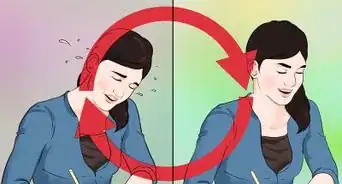
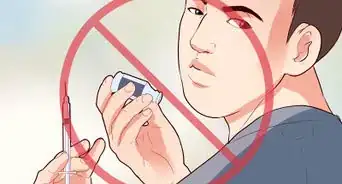

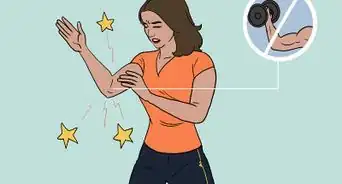


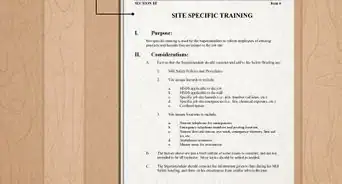
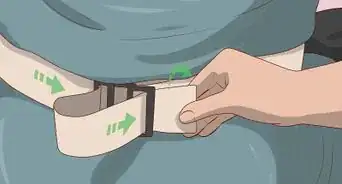
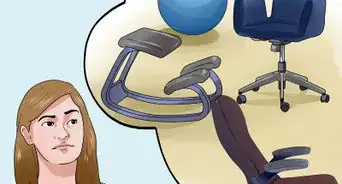












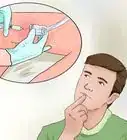





































Medical Disclaimer
The content of this article is not intended to be a substitute for professional medical advice, examination, diagnosis, or treatment. You should always contact your doctor or other qualified healthcare professional before starting, changing, or stopping any kind of health treatment.
Read More...